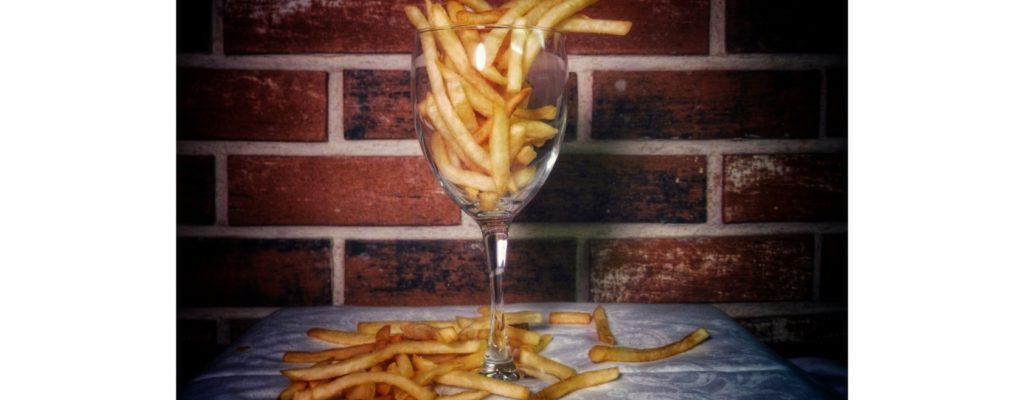It’s been widely rumored that Marjorie Taylor Greene is an imbecile—a dangerous imbecile, but an imbecile, nonetheless.
I first noted that in this space last August when she was in a run-off election in Georgia with John Cowan, a Republican who ran ads during the campaign saying, “All of the conservative. None of the embarrassment.” Cowan, a neurosurgeon and businessman, seemed like an old-school, reasonable Republican whose unwillingness to embrace Trumpian politics cost him the election.
He told Politico, “She is not conservative—she’s crazy…She deserves a YouTube channel, not a seat in Congress. She’s a circus act.”
Even Mitch McConnel has described Greene as a “cancer” on the GOP, although I have suggested that he’s the cancer and Marjorie is just an embarrassing prom-night zit.
While most of her bizarre notions seem too farfetched to even consider, she might be onto something with the whole Jewish laser thing. You know, her theory that we, the Chosen People—however unlikely this may seem considering some aspects of our secular culture—somehow got our hands on some space lasers from the Topeka outlet of Pep Boys (Manny, Moe & Jack) that we launched into the upper atmosphere to zap California into flames.
Jesus, the Jewish kid whose birth coincided with much of the world stopping to count the calendar years backwards, might have been there to direct laser fire. Who really knows about these things?
Forest fires, despite what Smokey Bear might have said, don’t just happen after all. Here’s a new slogan for the National Park Service: “Only Jews can prevent laser fires.”
The thinking (?) behind Greene’s position is that a cabal of Jewish bankers, brokers, and hedge fund managers, along with a passel of unemployed Italian busboys and Pacific Gas & Electric (PG&E) linemen for the counties, headed by a French winemaker named Baron Philippe de Rothschild, wanted to establish a high-speed rail system that could provide passenger service between San Francisco and Los Angeles, a trip that would take about 17 minutes. Naturally, the most efficient way to establish track beds for this venture is to burn everything in sight and hire illegal immigrants to start laying the rails.
The only reason to find this somewhat plausible is to discover why Elon Musk, the founder of every business that wasn’t founded by Bill Gates, Mark Zuckerberg or Jeff Bezos in this century, vacated all thirty-seven of his California mansions (they later burned to the ground), and moved to a Texas outpost on the streets of Laredo. He and Marty Robbins built an adobe mission-style house there with dirt floors and an antique Taco Bell sign. They seem to be as happy as you can be in Texas.
I happen to know Elon, or “Mr. Musk,” as only his closest friends call him.
A couple of years ago I was trying to get back into the free-lance writing business. I was also in a coma in a Denver hospital at the time, which may have added some new dimensions to my memory.
I’d heard from a saxophonist and little-known, one-hit rap artist I hadn’t seen in almost three decades. He read about my re-employment plans on Facebook and friended me. Zarf, who goes by Lil’ Zarf when rapping, told me that he was going into space on Mr. Musk’s first voyage to provide a solo sax soundtrack.
Then we talked about a bar mitzvah we had once attended near Springfield, Illinois, where about seventy-five 13-year-old boys in yarmulkes spent most of the afternoon vaulting over the buffet tables, as the 13-year-old girls sat on the sidelines contemplating their futures with such idiots.
Zarf figured I could document the voyage for The National Enquirer or Watchtower, the only news outlets Mr. Musk trusted.
I said I was very much interested, despite my fear of flying—and crashing. Especially crashing.
To help seal the deal, Zarf promised me he wouldn’t rap.
Zarf, Mr. Musk, and I met at a restaurant in Santa Maria, a California coastal town settled by Portuguese immigrants sometime during the final season of Gunsmoke and where there is absolutely nothing to eat but grilled tri-tip beef, Pinquito beans and Dixie cups full of a creamy Cole slaw with celery seeds.
There used to be macaroni-and-cheese, but that fell out of favor.
Even people who live in Santa Maria can only eat tri-tip, beans, and slaw. It’s a law. Or an ordinance. I don’t know the difference.
Mr. Musk’s plans for the maiden space launch for his company, SpaceX, whose stock shares were valued in the neighborhood of $109,033.19 each, far eclipsing the value of Tesla, whose stock was the same per share as the cost of one of the actual cars, were considerably more modest than anything put together by NASA.
Mr. Musk showed us the pictures of our space craft.
It appeared to be a four-man, pop-up blue tent sitting atop what seemed to be about 16-feet of rusted oil barrels that had been welded together. He had bought the tent at Walmart for $129.95, on sale, and had retro-fitted it with the barrels that housed an engine, fuels tanks, an accelerant, and WIFI. Once in space, he enthused, the barrels would fall away, cutting out our cell service, but allowing us to orbit once around Mars, which he thinks should be a democracy administered by Jim Jordan and Matt Gaetz, before we would return to earth pinpointed somewhere between Santa Barbara and Nashville.
When I asked about how we would re-enter the earth’s atmosphere and land without power, he coolly asked, “Have you not seen The Wizard of Oz?”
“S-o-r-r-y. Geesh.”
The trip went well, if one thinks spinning around in a rip-stop nylon tent in outer space with an eccentric billionaire and a saxophonist who played like Boots Randolph (I had forgotten about his mediocre skill set) is something having gone well. After 40 days of “Yakety Sax (Don’t Talk Back)” I kept hoping the 81-year-old Lil’ Zarf would emerge to rap a few choruses of his 2013 chart-topping “Gimme Some Old, Old, Really Old Booty.”
If Mr. Musk could have figured out how to open the tent flap, then only two of us would have landed in a parking lot at a synagogue in Holyoke, Nebraska, where there are no Jews. Yet another metaphysical mystery on life’s immense journey.
As it were, the three of us enjoyed a post-orbit repast of Rocky Mountain oysters, sweet potato fries with a Miracle Whip and paprika dip, and Coors Light, which may or may not actually be beer. The jury is still out.
There was also a relish tray—something anybody under the age of 62 won’t have a clue about.
A couple of years have passed since Zarf, Mr. Musk and I orbited the earth in the tent. Did I mention it had a waterbed, a tapestry depicting the French revolution, and delicately laced throw pillows from J.C. Penney? Probably not.
Anyway, the swearing-in of Rep. Greene and the announcement of her unfounded QAnon theories led me to call my close friend Mr. Musk.
“My people are being accused of setting fires in California with lasers from outer space,” I said. “Can we go up into the stratosphere to investigate?”
Mr. Musk is a man of few words.
“No,” he explained.
Photo illustration by Courtney A. Liska
Santa Maria Tri-Tip
A road trip from Los Angeles to San Francisco, and back, was never complete without stops at one of the many open-pit grill joints that offered tri-tip beef roast with Pinquito beans (I found some canned by S&W at my local Albertson’s) and a crisp diner-like slaw in Santa Maria. Each place—a few of which served mac & cheese as a side—had its own take on the rub. This is mine. In nicer weather than we’re currently enjoying, this cut of beef begs to be grilled over a wood fire.
Rub (enough for a 4 pound roast)
1 Tbs. Kosher salt
1 Tbs. coarse ground black pepper
1 Tbs. garlic powder
1 Tbs. onion powder
1 tsp. cayenne
1 Tbs. dried oregano
1 tsp. dried rosemary
1 tsp. ground mustard seed
Rub the tri-tip roast with the rub described. Wrap in plastic wrap and keep in refrigerator overnight, or for at least four hours. Remove one hour before cooking.
Heat a small amount of oil in an oven-safe pan and deeply sear the tri-tip, fat-side down.
Turn the roast over and place in an oven at 425°.
Roast for 10 to 15 minutes per pound.
Allow roast to rest for 10 minutes before carving across the grain.









